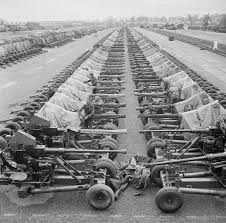Vaša košarica je trenutno prazna!
1415 – Jan Hus Executed for Heresy

On July 6, 1415, Czech religious reformer Jan Hus was burned at the stake in Constance, Germany. He was convicted of heresy by the Council of Constance for challenging the authority and corruption of the Catholic Church. Hus advocated for Bible translation and criticized indulgences. His trial was politically motivated and widely condemned as unjust. His death sparked unrest in Bohemia, leading to the Hussite Wars. Hus became a symbol of Czech nationalism and religious reform. His teachings influenced later reformers like Martin Luther. July 6 is still observed in the Czech Republic as Jan Hus Day.
1777 – Battle of Ticonderoga Ends

On July 6, 1777, British forces under General John Burgoyne took control of Fort Ticonderoga during the American Revolutionary War. The American troops, vastly outnumbered, abandoned the fort without a major battle. The loss was a strategic blow to the American cause and shocked patriot supporters. However, the event galvanized American forces to regroup. Burgoyne’s slow advance eventually led to his surrender at Saratoga. The fall of Ticonderoga highlighted the importance of supply lines and terrain. The battle was part of Britain’s failed campaign to cut off New England. It remains a key moment in Revolutionary War history.
1885 – Louis Pasteur Administers First Rabies Vaccine

On July 6, 1885, Louis Pasteur successfully administered the first rabies vaccine to a human. The patient, 9-year-old Joseph Meister, had been bitten by a rabid dog. Pasteur’s experimental vaccine saved the boy’s life and marked a major breakthrough in immunology. The treatment involved weakened virus injections over several days. Pasteur’s success confirmed the germ theory of disease and advanced modern medicine. This event boosted public trust in vaccines. It also led to the creation of the Pasteur Institute in Paris. Pasteur is now regarded as a founding father of microbiology.
1944 – D-Day Preparations at Peak

On July 6, 1944, Allied forces continued intense preparations for the Battle of Normandy, also known as D-Day. The Normandy landings had begun on June 6, and by July, Allied troops were pushing inland. Troops fortified beachheads and launched offensives to liberate towns. The planning involved massive coordination of men, machines, and logistics. Casualties remained high, but progress was steady. The battle would eventually lead to the liberation of Paris. The success of D-Day marked a turning point in World War II. It showed the power of Allied unity and strategic planning.
1944 – First Operational Tank Battle Between US and German Forces

On the same day during WWII, U.S. and German tanks clashed near Carentan, France. It marked one of the first major armored engagements after D-Day. American Sherman tanks faced off against German Panzer divisions. The muddy terrain and bocage landscape complicated tactics. Despite losses, Allied forces gained ground. These battles demonstrated the importance of combined infantry and armor strategy. The engagement helped secure the Cotentin Peninsula. It remains a notable example of early tank warfare in Western Europe.
1964 – First Successful Human Use of a Genetically Modified Organism (GMO)

On July 6, 1964, scientists achieved the first use of a genetically modified virus to treat human disease. Although not widely publicized at the time, the experimental therapy marked a turning point in biotechnology. It laid the groundwork for modern gene therapy and genetic engineering. The virus was altered to fight specific cancer cells. The experiment paved the way for future medical advances. GMO technology has since been used in agriculture, vaccines, and medicine. This little-known event changed the landscape of science. Today, GMOs are vital tools in both health and food security.
Want to dive deeper into ancient warfare? Don’t miss our articles on Timeline Stories.
